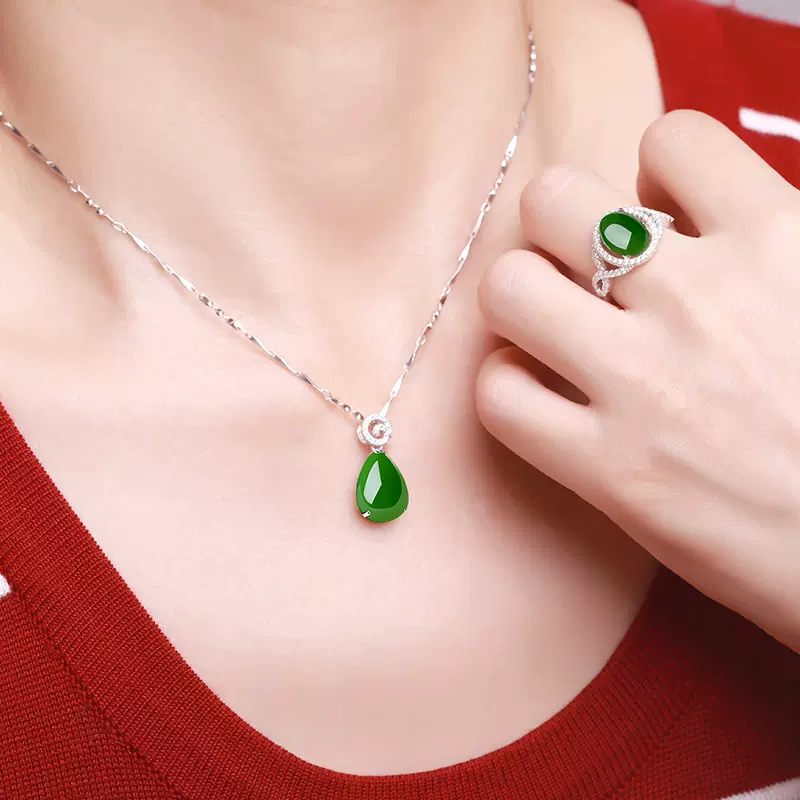Jade is a highly valued and revered gemstone in many different cultures around the world. From its use in ancient times as a protective talisman to its role as a symbol of status and wealth in later periods, jade has played an important role in our history and traditions. In this article, we’ll take a deep dive into the different types of jade used in necklaces and explore their colors, meanings, and traditions.
What is Jade Necklace?
A jade necklace is a piece of jewelry that is made from jade, a hard, green mineral that is highly valued for its beauty and durability. Jade necklaces can be made from different types of jade, including green, white, black, lavender, and yellow jade. Jade necklaces are often worn for their beauty and elegance, and are a popular fashion accessory in Chinese culture. They are often associated with power, status, and spirituality, and are believed to have healing properties that promote physical and emotional well-being. Jade necklaces can be worn for special occasions, such as weddings and birthdays, or as an everyday accessory to add a touch of sophistication and elegance to any outfit.

Nephrite Jade Necklaces
Nephrite jade is one of the most common types of jade used in necklaces. It is often referred to as “soft jade” because of its smooth and silky texture. Nephrite jade comes in a variety of colors, including green, white, and grey.
Nephrite jade is associated with peace, harmony, and balance and is often used in feng shui to promote these qualities in the home. Nephrite jade necklaces are often smooth and simple in design, and are believed to have a calming and soothing effect on the wearer.
In Chinese culture, nephrite jade necklaces are often given as gifts to express love and affection. They are also believed to bring good luck and protection to the wearer.
Jadeite Jade Necklaces
Jadeite jade is a rarer and more valuable type of jade used in necklaces. It is often referred to as “hard jade” because of its dense and hard texture. Jadeite jade comes in a wider range of colors, including green, white, lavender, and red.
Jadeite jade is associated with good luck, prosperity, and fortune. It is often given as a gift during the Chinese New Year to wish the recipient good fortune in the coming year.
Jadeite jade necklaces are often more ornate and intricate in design than nephrite jade necklaces. They are believed to have a powerful and energizing effect on the wearer, and are often used in meditation and healing practices.
Other Types of Jade Used in Necklaces
In addition to nephrite and jadeite, there are many other types of jade used in necklaces. Hetian jade is a type of nephrite jade found in China’s Xinjiang region. Hetian jade is known for its white, milky appearance and is associated with purity and clarity.
Maw Sit Sit is a rare type of jade found in Myanmar. It is often used in necklaces for its unique and vibrant colors, which range from bright green to black and red. Maw Sit Sit is associated with transformation and change, and is often used by those seeking to make positive changes in their lives.
Summing Up
Jade is a highly valued and revered gemstone with a rich and fascinating history. Its different types and colors each have their own significance and meaning, making jade necklaces an important part of many different cultures and traditions around the world.
Whether you’re wearing a nephrite jade necklace for its calming and soothing qualities, a jadeite jade necklace for its energizing and invigorating effects, or a rare and unique type of jade necklace for its transformative properties, understanding the symbolism and traditions behind each type can add a deeper level of appreciation and meaning to your jewelry collection.
No matter what type of jade necklace you choose, there’s no denying the enduring appeal and significance of this precious gemstone.